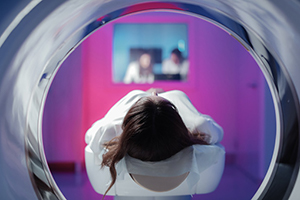According a new study published by Eckstein et al in the American Journal of Roentgenology (AJR), new suspicious findings occurred in 5.5% of breast magnetic resonance imaging (MRI) examinations performed to monitor patients’ response to neoadjuvant therapy; none of these newly detected lesions were malignant.
“Our findings suggest that new lesions that arise in the setting of neoadjuvant therapy are highly unlikely to represent a new site of malignancy, particularly if the index malignancy shows treatment response,” wrote the study authors.
Study Methods
Based on a presentation given at the American Roentgen Ray Society 2019 Annual Meeting, the researchers’ retrospective database review focused on breast MRI examinations performed to assess response to neoadjuvant therapy between 2010 and 2018. Cases with new suspicious lesions assessed as BI-RADS 4 or 5 and found after the initiation of neoadjuvant treatment were included. Meanwhile, cases with no pretreatment MRI, cases in which the suspicious lesion was present on the baseline MRI but remained suspicious, and cases with insufficient follow-up were excluded from the analysis. Pathologic examination determined malignant outcomes, whereas benign status was established by pathologic examination, follow-up imaging, or both.

Photo credit: Getty
Results
A total of 419 breast MRI examinations in 297 women (mean patient age = 45 years; range = 32–65 years) were performed to assess response to neoadjuvant treatment. After exclusions, 23 MRI examinations (5.5%) with new suspicious findings distinct from the site of known malignancy comprised the final study cohort. Of these 23 lesions, 13 new suspicious findings (56.5%) were contralateral to the known malignancy, 9 (39.1%) were ipsilateral, and 1 (4.3%) involved the bilateral breasts. Lesion types included mass (n = 16, 69.6%), nonmass enhancement (n = 5, 21.7%), and focus (n = 2, 8.7%).
Noting that, currently, there are no guidelines for the management of new suspicious imaging findings identified on MRI during the course of neoadjuvant systemic breast cancer treatment, “Results in this small cohort suggest that these new findings are highly likely to be benign, particularly in the setting of response to therapy, which may potentially obviate biopsies in these patients in the future,” wrote the authors.
“However, larger studies across different facilities are needed to confirm whether biopsy may be safely averted in this scenario,” they concluded.
Disclosure: For full disclosures of the study authors, visit ajronline.org.

